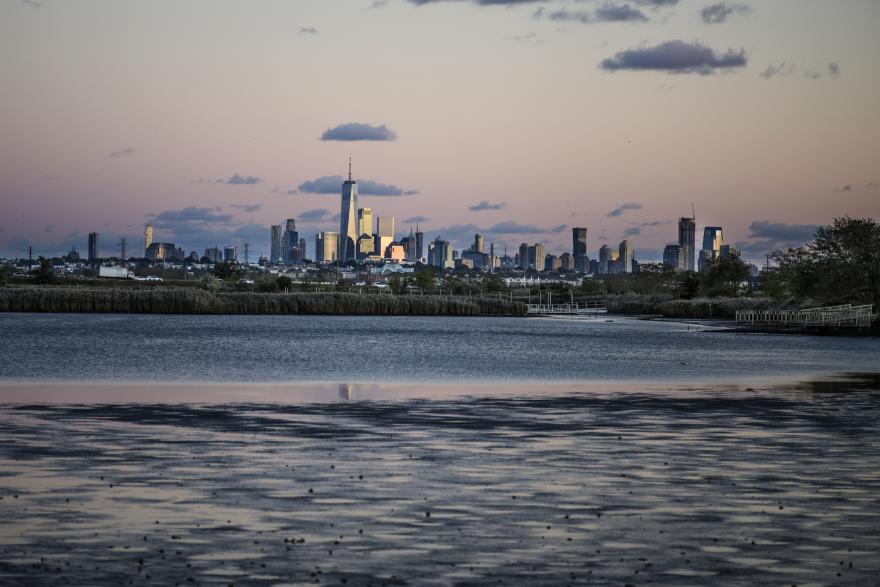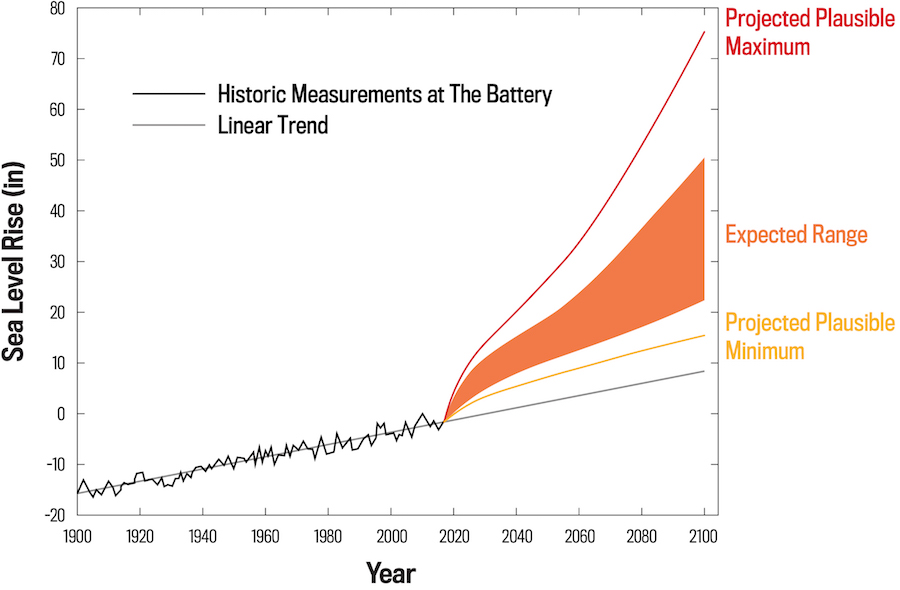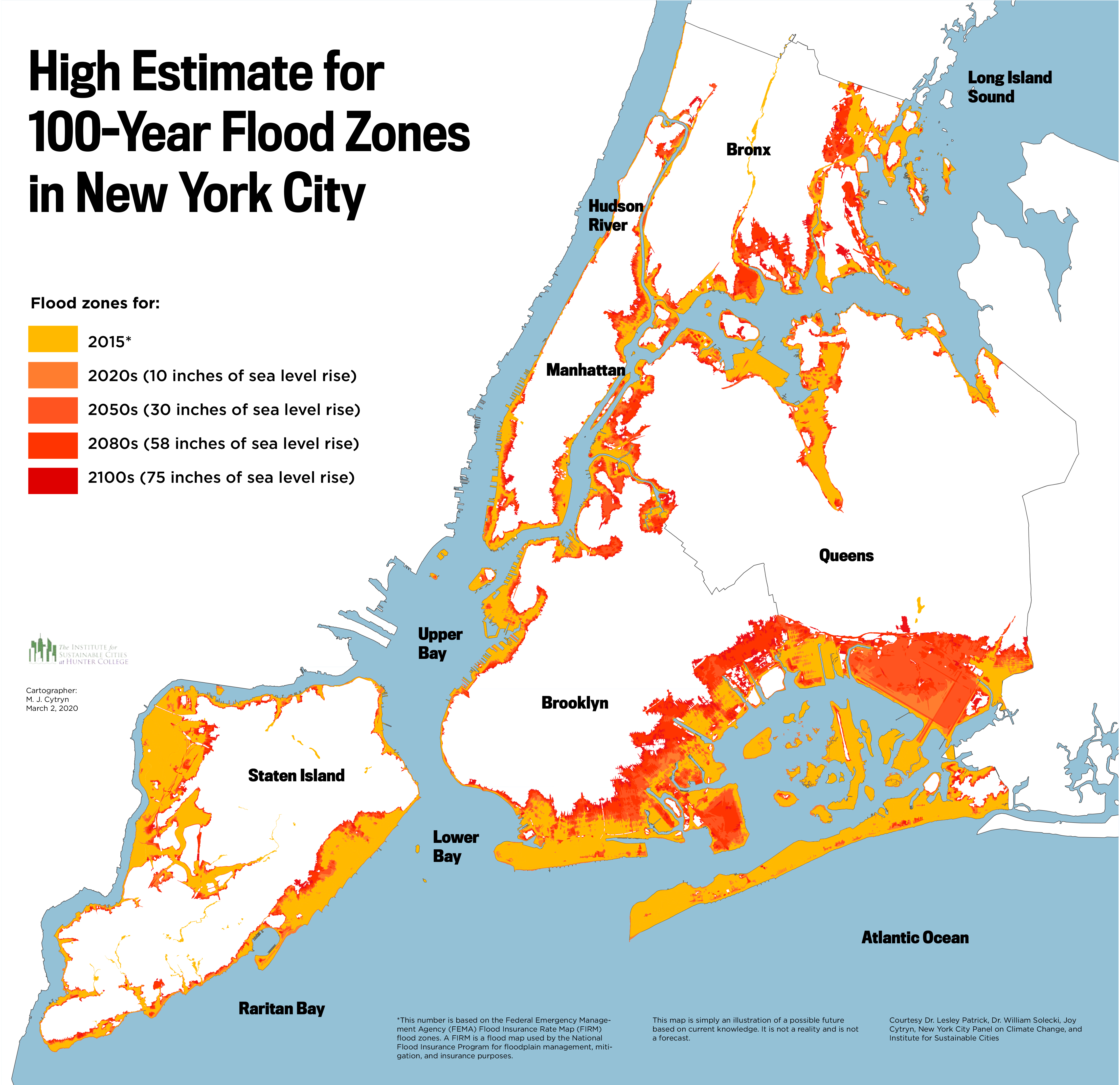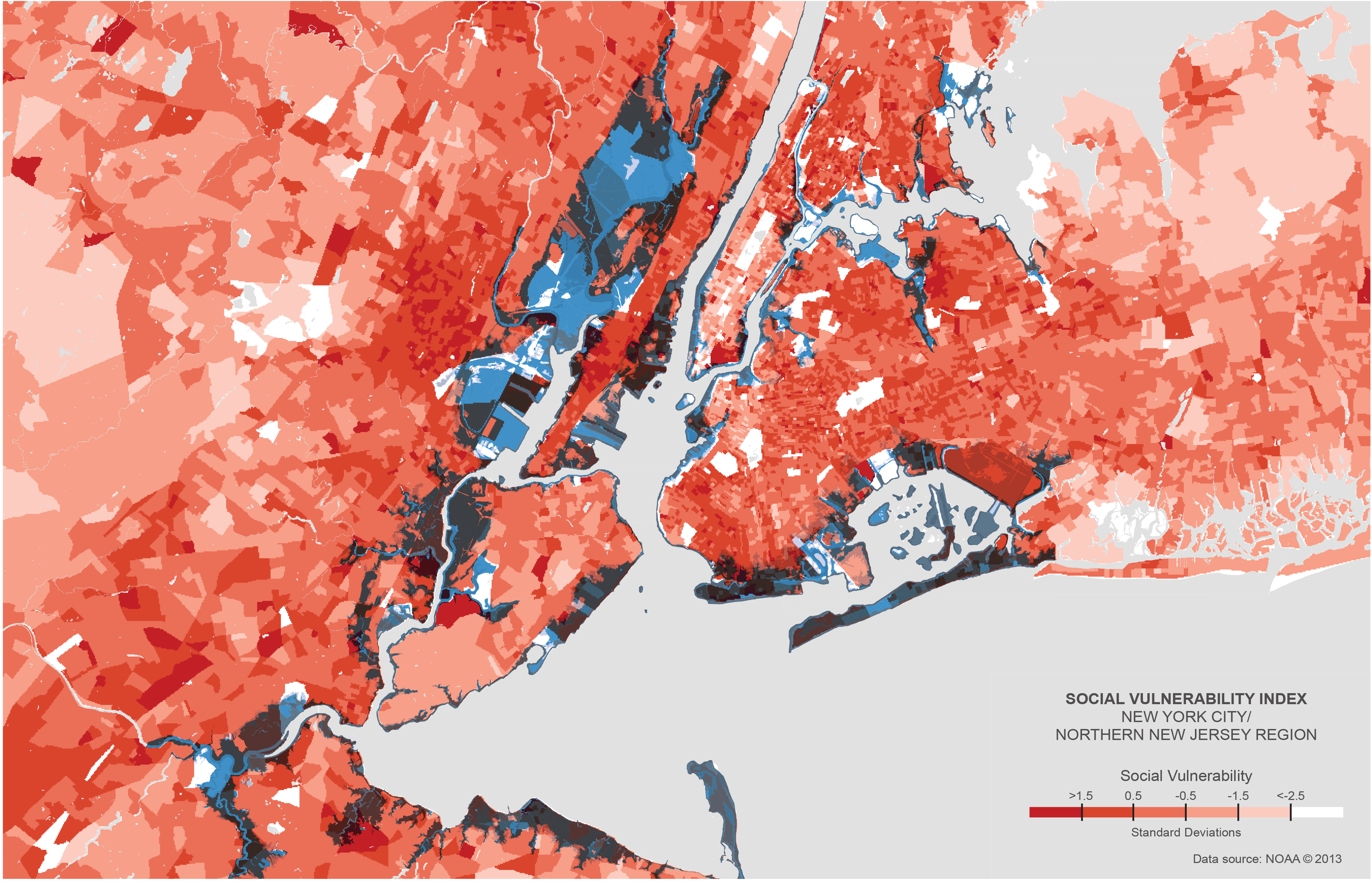Rising Tide: New York and Sea Level Rise

Like many coastal cities around the world, New York is at immediate and growing risk from rising sea levels. The 520 miles of shoreline of our city of islands include working waterfronts, beachfront communities built right up to the Atlantic Ocean, and neighborhoods built on landfill and historic marshlands.
What Causes Oceans to Rise?
Sea levels have been going up globally and will continue to do so for centuries, but rates of change vary from location to location. Some factors driving rising tides include:
-
Due to the warming climate, glaciers and ice sheets on land are melting, adding more water to our global ocean.
-
As seawater warms up, it increases in volume, adding to sea level rise.
-
Warming waters may be changing ocean currents. This could alter how water is distributed, leading to faster sea level rise in some places—like the East Coast—than in others.
-
Some coastlands are sinking back down as a long-term result of the end of the last ice age as well as more recent human activity; sinking land worsens the effects of rising water levels.
How High Will the Water Go?
The amount of sea level rise globally will depend in large part on the amount of greenhouse gases we release into the atmosphere. Within 30 years, levels will likely increase by approximately six inches but potentially as much as 11 inches; 80 years from now the rise could be as high as 67 inches under some scenarios. In future decades and centuries, the rise could be even more dramatic.
Observed sea level rise at The Battery in New York City from 1900 through 2017 compared with projected changes in sea level rise from the New York City Panel on Climate Change 2015 Report in the 2020s.
Threats from Rising Seas
As sea levels go up, tidal flooding will become more common. Warming waters make storms more frequent, powerful, and slow-moving, intensifying the problem. In New York City, low-lying coastal areas like Coney Island, the Rockaway peninsula, Flushing Meadows, Jamaica Bay, Red Hook, Hunts Point, East Harlem, Throgs Neck, and the East Shore of Staten Island will be at increased risk.
This map shows the expanded areas likely to flood if high estimates are reached in the coming decades, threatening communities and vital infrastructure.
Some of the most at-risk neighborhoods have also suffered from decades of disinvestment and social and racial inequalities, leaving them less able to recover from the effects of rising waters. Two-thirds of the region’s most socially vulnerable communities live within two miles of the flood zone.
What New York Is Doing
New York City has already put in place aggressive plans to reduce its carbon emissions, to protect sections of the shoreline, and to help neighborhoods adapt to rising tides. Still, huge challenges remain. Limited funding means that proposals like the “Big U” to protect Lower Manhattan with barriers have been scaled back, and other sections of the five boroughs will remain unprotected against storms and longer-term sea level rise.
Reducing Emissions: On average, New Yorkers already have a smaller carbon footprint than most other Americans because of the city’s density and vast public transportation system. But our buildings and transit still use massive amounts of energy, creating emissions that warm the planet and contribute to sea level rise. Although New Yorkers cannot reverse the global climate problem with local efforts alone, New York’s commitment to achieving carbon neutrality by 2050 is setting a standard for the rest of the country that can inspire others to action.
Adapting to Rising Tides: Even if all carbon emissions stopped today, sea levels will still continue to go up. Businesses and residents throughout the city will need to adapt to the growing risks, and some coastal neighborhoods may not be savable in the long term.
Reducing Emissions:
Ambitious action already underway by New York City include the following:
-
Banning the use of fossil fuels in all new buildings starting in 2030
-
Requiring most existing large buildings to limit their energy consumption by 2035
-
Providing financing to support energy efficient upgrades in private buildings
-
Promising to reach carbon neutrality by 2050
-
Reducing emissions from City-owned buildings
-
Expanding bike lanes
-
Developing a citywide network of electric vehicle charging points
In light of the accelerating pace of the climate crisis, some activists and policymakers are calling for even more robust measures—although they often disagree about how to pay for such changes. Some might include: expanding solar and other sources of renewable energy; expanding efficiency rules to cover more buildings; dramatically expanding and electrifying public transportation, especially to underserved neighborhoods; electrifying transit and home power systems; paying people to replace their gas-powered cars with electric vehicles; or immediately ending all fossil fuel projects in the five boroughs.
Adapting to Rising Tides:
New York City has already launched a range of resiliency projects, including:
-
Protecting vulnerable areas by extending the shoreline or constructing barriers in areas like the East Shore of Staten Island, the Rockaways, and sections of Lower Manhattan
-
Building waterfront parks that lessen the impact of waves and manage coastal impacts
-
Creating new zoning rules to limit density and development in the most flood-prone areas
-
Updating building codes to promote flood-resilient construction in new projects, while supporting retrofitting of existing buildings to resist flooding
-
Working to reconfigure underground and low-lying infrastructure, such as gas, electricity, steam, sewer, and transportation lines
-
Providing free risk assessments and grants for resiliency improvements for small businesses in areas impacted by Superstorm Sandy
Some advocates say that these efforts, while important, will not be enough to climate-proof NYC for the long term. Other areas under discussion include expanding zoning for flood resiliency further inland or even retreating from some areas and working with coastal residents to relocate.
What You Can Do
Actions by individuals matter too—whether it’s reducing our own carbon footprints, organizing with others in our communities, or advocating for new policies on a larger scale.






